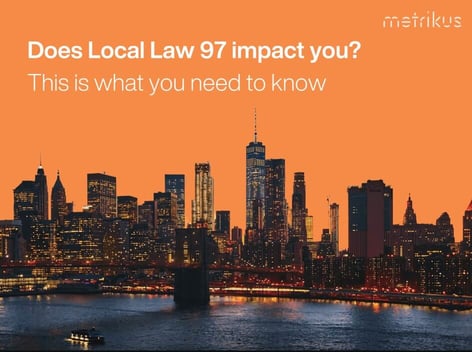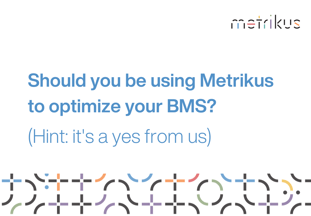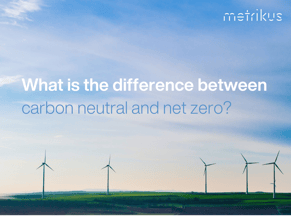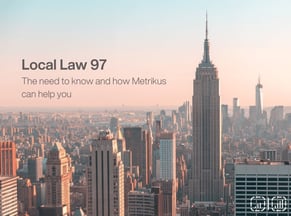Local Law 97: everything you need to know
Buildings produce a huge portion of carbon emissions everyday: they’re responsible for a massive two thirds of New York city’s carbon emissions annually.
There’s a lot out there about Local Law 97, and it’s essential to stay in the know to understand how it will affect building owners across New York City.
We spoke to Ilana Ettinger, lawyer and founder of Urbane, a real estate consulting firm based in New York, to bring together everything you need to know. So read on to find out what Local Law 97 is, if it will affect you, and what you can do about it.
What is Local Law 97?
Local Law 97 (LL97) is a regulation set out by the New York City council as part of the Climate Mobilization Act. It came into effect in November 2019, and is a citywide law placing carbon caps on all buildings above a specified size, as part of an ambitious plan to drastically reduce the city's carbon emissions.
It states that from 2024, these buildings will have to comply with new greenhouse emissions caps, or face a fine.
It’s revolutionary by way of building regulations: LL97 is the most ambitious carbon emissions building law in place globally.
Why is it coming into effect?
Cities everywhere are under pressure to take action against climate change. Under the Paris Agreement, the EU and Member States have committed to a significant reduction in carbon emissions.
This is to keep the average global temperature increase to below 2°C in the face of the climate crisis. LL97 will contribute towards this by lowering NYC’s carbon emissions: the goal is to reduce the emissions produced by the city’s largest buildings 40% by 2030 and 80% by 2050.
By instating limitations on building emissions, the law will encourage building owners to move towards sustainable, energy-saving methods and renewable energy in their buildings.
Who will be affected?
The law affects the following types of buildings:
- Any building over 25,000 sq ft in size
- Two or more buildings on the same tax lot that have a combined size exceeding 50,000 sq ft
- Two or more buildings owned by the same condo association and governed by the same board that have a combined size exceeding 50,000 sq ft
It’s key to remember that building owners are directly responsible for understanding whether their buildings are affected and, if so, ensuring they comply.
I’m affected by LL97. What steps do I need to take?
By May 2025, any building that is impacted by Local Law 97 will have to file an annual Greenhouse Gas Emission report. This will state whether the building either complies with regulations, or how much it exceeds the specified limits. This report will have to be filed every following May.
For most affected buildings, this will mean active steps will need to be taken to get a better understanding of your energy usage, and to reduce these carbon emissions fast.
What happens if you don’t comply?
Buildings that exceed the maximum limit will face an annual penalty. This works out as the difference between the building’s allowed limit and its actual carbon emissions, multiplied by $268.
---
If you really want to get into the details, take a look at the new emissions limits under LL97 to get a better idea of whether your building already complies – or how far it’s currently exceeding by. Stay tuned for more articles with Ilana Ettinger about how LL97 will affect building owners and tenants differently, how Metrikus can help you prepare, and what this law means for the future of the building industry.
If you’re ready to reduce your emissions, get in touch with us today.




